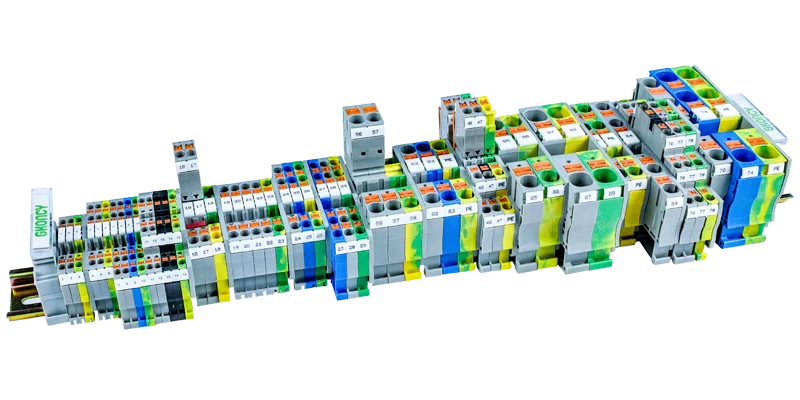Table of Contents
Hello there, electrical enthusiast! If you’re reading this, chances are you’re knee-deep in a project that requires the precision and reliability of DIN rail mounted terminal blocks. But with so many options out there, how do you know which terminal block is the right one for your needs? Fear not, because I’m here to guide you through the process with a friendly approach. Let’s dive in!
Current Rating: The Power of Your Connection
First things first, you need to consider the current rating of the terminal block. This is the maximum amount of electrical current it can safely handle without overheating or causing a fire. It’s like knowing how much weight your trusty old backpack can carry before it gives out.
Check Your Load: Look at the devices you’re connecting. What’s the maximum current they draw? Your terminal block should comfortably handle this.
Safety Margin: It’s always a good idea to choose a terminal block with a higher current rating than your maximum load to ensure safety and longevity.

Voltage Rating: The Spark of Life
Voltage rating is another critical factor. It tells you the maximum voltage the terminal block can handle. Think of it as the voltage’s “speed limit” for your terminal block.
Match Your System: Make sure the voltage rating is compatible with the voltage of your electrical system. Going over this limit can lead to damage or even dangerous situations.
Wire Size Compatibility: The Art of Fitting
The wire size compatibility is like finding the perfect pair of shoes for your feet (or in this case, your wires). You want a snug fit, not too tight, not too loose.
Check the Specs: Terminal blocks are designed for specific wire sizes. Check the manufacturer’s specifications to ensure your wires will fit.
Wire Gauge: Common wire sizes range from 14 AWG (thick) to 26 AWG (thin). Choose a terminal block that matches your wire gauge.

Insulation Material: The Protector
Insulation is what keeps your wires safe from short circuits and other electrical mishaps. It’s like a shield for your electrical connections.
Material Matters: Common materials include PVC, which is cost-effective, and thermoplastic, which offers better heat resistance. Choose based on your application’s temperature and chemical exposure.
Color Coding: Some terminal blocks come with color-coded insulation for easy identification. A nice touch for organization freaks!
Environmental Conditions: The Test of Time
Your terminal block will face all sorts of environmental challenges. It’s like a soldier in the battlefield of your electrical setup.
Temperature: From scorching hot summers to freezing cold winters, your terminal block should be able to handle the temperature swings.
Moisture: If your setup is in a damp environment, look for terminal blocks with high moisture resistance.
Corrosion Resistance: For industrial applications, choose terminal blocks that can withstand harsh chemicals and corrosive environments.

Ease of Installation: The User-Friendly Touch
Last but not least, consider how easy it is to install the terminal block.
DIN Rail Compatibility: Ensure it fits your DIN rail system without a hitch.
Screw or Push-Button: Some terminal blocks use screws for secure connections, while others use push-buttons for quick installation. Choose what suits your workflow.
Wrapping Up: The Checklist
Before you head out to choose your terminal block, here’s a quick checklist to keep in your pocket:
Current and Voltage Ratings: Match them to your system.
Wire Size: Ensure compatibility.
Insulation Material: Pick one that suits your environment.
Environmental Resistance: Can it handle the conditions?
Ease of Installation: Should be a breeze.
Choosing the right DIN rail mounted terminal block is all about understanding your needs and matching them with the right product. With this guide, you’re now equipped to make an informed decision. Go forth and conquer your electrical projects with confidence!
